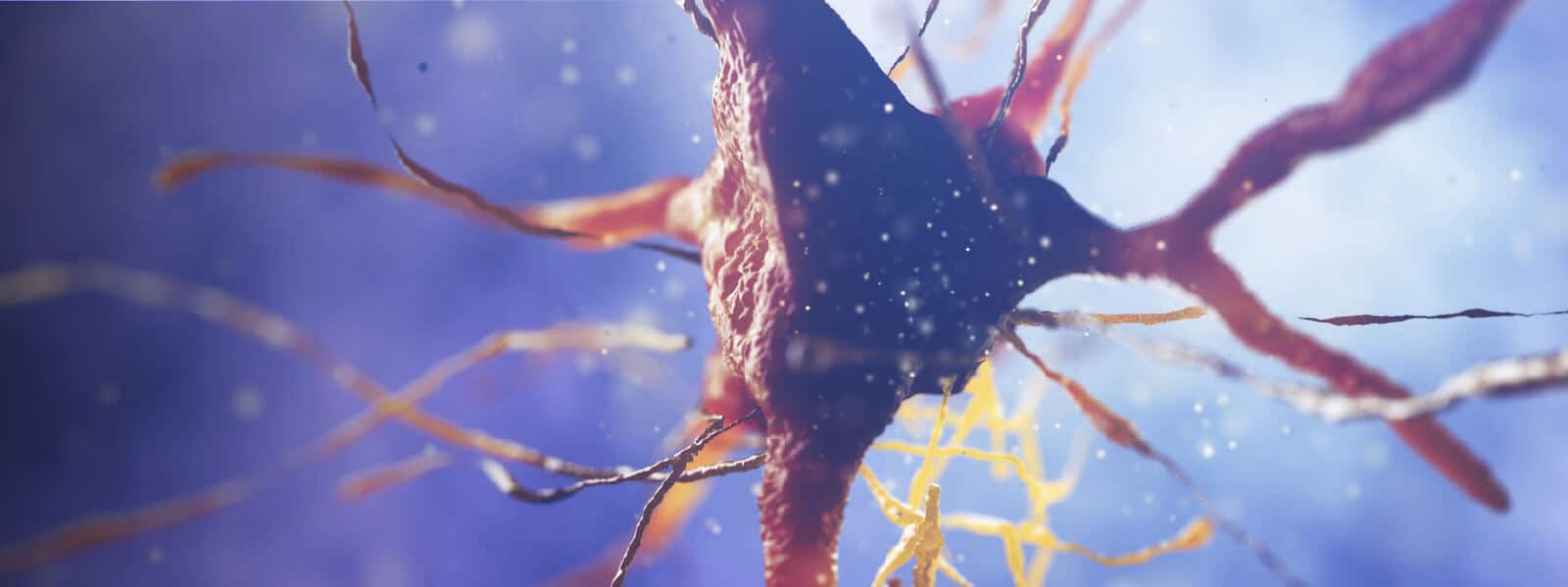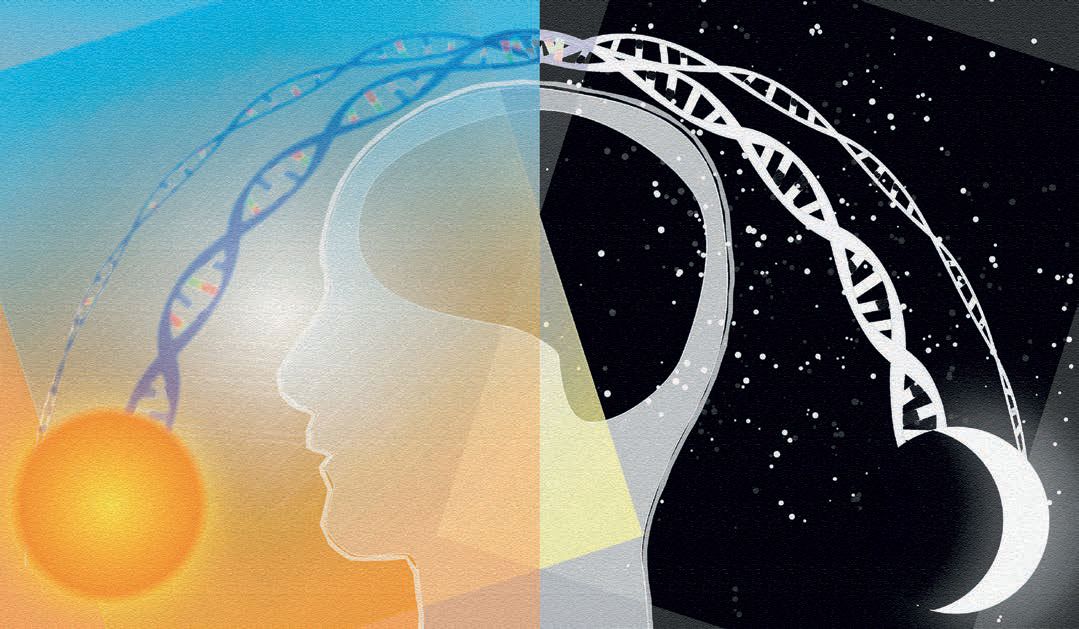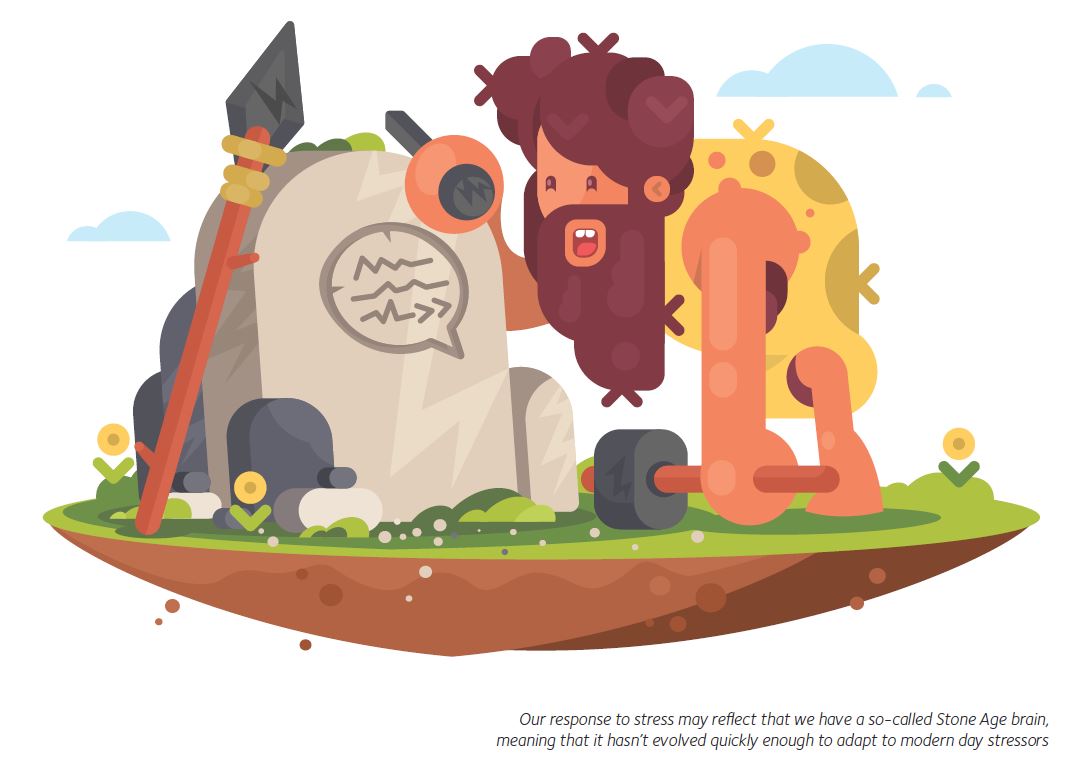
Physiology News Magazine
Stressing out the immune system
Many systems in the human body are impacted by stress, among these the immune system is particularly sensitive
Features
Stressing out the immune system
Many systems in the human body are impacted by stress, among these the immune system is particularly sensitive
Features
Natalie Riddell
School of Biosciences and Medicine, University of Surrey, UK
https://doi.org/10.36866/pn.107.38
Stress can get under our skin. It can influence each and every physiological system, and all of the major contemporary diseases in the UK, including cardiovascular disease, inflammatory disorders, metabolic syndrome, infectious diseases and cancer, have been associated with stress. Stress affects everyone, and levels of anxiety and mental health disorders are increasing with work-related stress now being the second most commonly reported illness in the UK workforce. Over the last four decades, research in the area of psychoneuroimmunology (PNI) has identified stress-induced immune alterations as a potential mediator between chronic stress and ill-health.

In the 1970s, Holmes and Rahe developed a scale to subjectively grade stress. They ranked over 40 different types of life stressors, such as the death of someone close to you, changes in relationship status, work-related stress, even Christmas, and they assigned each stressor a score. The total tally of stress scores that a person had experienced in the last year could accurately predict the likeliness of future illness. This demonstrated that stress and illness were closely related. In the 1990s, Cohen et al. eloquently demonstrated that psychological stress increased the rates of respiratory infections and clinical symptoms in participants inoculated with the common cold (Cohen et al., 1993). Subsequent studies revealed that every organ, tissue and cell of the immune system could be altered by psychological stress. The involvement of immune alterations in stress-induced diseases was recognised and the field of psychroneuroimmunology (PNI) was born.
Defining stress
Stress is highly subjective. Something that I may class as stressful (watching Arsenal this season), may not be stressful to other people (Tottenham supporters). So how can we define stress? In the 1960s, the psychologist Richard Lazarus introduced the concept that stress is a process consisting of three distinct steps. First, a stimulus (i.e. the stressor) has to be present and perceived. Second, the stimulus initiates a conscious or sub-conscious appraisal whereby the stressor is evaluated in relation to available coping options. If the demands of the situation outstrip the ability to cope then the situation is perceived as stressful. Third, this results in a stress response involving emotional (e.g. anxiety, embarrassment) and biological (e.g. autonomic-endocrine) adaptations. Put simply, stress is a situation or event that exceeds, or is perceived to exceed, the individual’s ability to cope, that then triggers an emotional and biological response.

The stress adaptation response and immunity
The biological adaptation to stress is activation of the sympathetic nervous system (SNS). The same biological response is induced whether the stressor is psychological, such as anxiety or embarrassment, or physical, for example, exercise, trauma or fever. In the case of psychological stress, the individual perceives an inability to cope and this results in the amygdala, a part of the brain that contributes to emotion processing, sending a distress signal to the hypothalamus. The hypothalamus can communicate with the periphery via the two arms of the autonomic nervous system: the parasympathetic ‘rest and digest’ arm and the sympathetic ‘fight or flight’ arm. During stress the SNS is triggered and various physiological changes occur, including an increase in heart rate, respiration and energy production. This promotes survival of the individual by maximising physical capacity to cope with the stressor.
The SNS innervates many organs and tissues throughout the body including the adrenal gland. During stress, sympathetic signalling causes the adrenal gland to secrete the two main stress hormones: adrenaline and cortisol. These hormones can spread and act throughout the body via the circulation. The SNS innervates all of the organs of the immune system, and individual immune cells also express adrenergic and glucocorticoid receptors, so can directly respond to changes in circulating levels of adrenaline and cortisol. Stress is therefore able to alter every process of immunity, from the initial development of stem cells into early immune progenitor cells in the bone marrow, through to the instigation of programmed immune responses to specific antigens in the lymph nodes. Even when in the peripheral tissues, such as the skin or gut, where mature immune cells are most likely to encounter infections, the cells can be regulated by stress hormones. It is therefore unsurprising that the immune system is a modifiable target of stress.
Acute stress and immunity
Research often focuses on chronic psychological stress. However, one of the most comprehensive meta-analyses on stress and immunity in humans to date found that the most robust and replicable findings in PNI are associated with stress responses lasting just minutes or hours rather than months or years (Segerstrom and Miller, 2004). A key phenomenon during acute stress is the rapid and transient movement of immune cells into the peripheral blood. But not all immune cells are mobilised; only cells which display immediate effector functions are involved, such as cytotoxic cells and cells with the potential to migrate into inflamed tissues. Therefore, acute stress not only increases the number of immune cells in the blood, but it also changes the composition of the blood. The upshot is an increase in the circulating ‘soldiers’ of the immune system, which is proposed to increase immune surveillance and thus enhance immunity during times of stress when, historically at least, injury and infection were more likely (Dhabhar, 2009).
It is indeed unlikely that the evolution of stress adaption would select for a cardiovascular and metabolic system that helps the organism to rapidly escape a predator, only for it to later succumb to an infection.
Indicative of an evolved ability to rapidly adapt to danger, all vertebrates, including humans, have the remarkable capacity to swiftly alter the immune cell composition in peripheral blood and tissues in response to acute stress. Furthermore, experimental animal studies have confirmed that acute stress, and the accompanied cell redistribution, predicts stronger delayed-type hypersensitivity responses, enhanced vaccine responses, an increased migration of leukocytes into wounded tissue, and faster wound healing. In humans, brief psychological stressors and exercise prior to vaccination have also demonstrate the ability to increase vaccination-induced antibody responses (Dhabhar, 2009).
But how do the physiological effects of acute stress manifest now in the modern era, when stress does not usually come with a physical or immunological challenge? Imagine increasing immune-surveillance in an individual who has an underlying inflammatory or autoimmune disorder,
such as atherosclerosis. The promotion of immunity in these circumstances could be seen as a negative outcome that would aggravate the condition.
Chronically stressing a caveman
What if the stress lasts for weeks, months or years? The stress adaptation response did not evolve to last for extended periods and, consequently, it cannot. This was first recognised in the 1930s by Hans Selye who described the three stages of the General Adaptation or Stress Syndrome. First there is the acute stress response in which the body prepares for fight or flight. But this level of excitement cannot be maintained so a second stage of adaptation occurs where the body becomes resistant to the stress. Finally, in chronic stress, the system enters a state of exhaustion and this fatigue of the immune system results in illness.
One theory in evolutionary psychology is that we have a Stone Age brain. This does not mean the brain has not evolved since the Stone Age, but that the brain has not evolved quickly enough for the modern world.

This may be true for the response to present-day stress. Many of today’s life stressors that cause an emotion response in the amygdala do not require a physiological response to ensure survival of the individual. Considering this, it is not surprising that the stress adaptation response to chronic stress may not serve us well.
Chronic stress and immunity
The immune system is delicately balanced between immune activation, which will clear infections and malignancies, and immune regulation which prevents self-harm that could otherwise result in autoimmunity and inflammatory disorders. Chronic stress appears to disrupt this balance. It causes the worst of both worlds: lower immune protection and greater inflammation. Cross-sectional studies of dementia caregivers versus age-matched non-caregiver controls demonstrate that chronic stress clinically reduces humoral (B-cell and IgG antibody) and cell-mediated (T-cell) immune responses to vaccination (Gouin et al., 2008). Caregivers also report more days of illness and upper respiratory tract infections. Together, this suggests that stress causes a decrease in immunity to novel infections. Chronically stressed individuals also show slower wound healing, latent virus reactivation, shortened leukocyte telomere lengths, greater oxidative stress and increased low-grade systemic inflammation, including increased IL-6. These effects can be seen in both young and old caregivers, individuals effected by major life events, and from individuals self-reporting high levels of stress.
Stress, immunosenescence and age-related diseases
The similarities of immune dysfunction brought about by ageing and chronic psychological stress are striking and include increased inflammation, reduced vaccination responses, decreased cell telomere lengths and increased inflammation (Gouin et al., 2008). Moreover, like stress, these features of immunosenescence have been associated with an increased risk of morbidity and mortality. It is possible that chronic stress may exert its negative impact on health through the induction of immunosenescence. High levels of work-related stress have been associated with rudimentary signs of immune ageing (Bosch, Fischer et al., 2009). Further, the impact of stress on immune function is reported to be worse in older individuals suggesting that the elderly are susceptible to a cumulative immune deterioration brought about by age and stress. Considering that 25% of the of the UK population is predicted to be over 65 years of age by 2030, a large number of people may be subjected to ill-health by means of stress- and age-induced immune decline.
Stress and circadian rhythms
Cortisol and adrenaline are not only released in response to stress – they are released continuously and have circadian rhythms, their diurnal fluctuations altering levels of immunity dependent on the time of day.
For example, the number of effector T-cells with immediate protective capacity in the circulation peak during active hours whilst naïve cell numbers are greater nocturnally. This rhythmicity is thought to promote immediate immune protection during the day, and tissue repair and initiation of adaptive immune responses at night. Immune circadian rhythmicity has clinical implication as demonstrated by a greater risk of death from sepsis in the early hours of the day, and the recent finding that vaccinations given during morning clinics may produce better antibody responses (Long et al., 2016). These observations signify the importance of the immune system’s circadian rhythm. One of the negative consequences of stress is that it may alter the typical daily perturbations of cortisol and adrenaline, and therefore alter normal immune homeostasis. This will particularly effect the health of individuals working night-shifts or travelling between different time zones on a regular basis.
Managing stress
Even if we could stop it, preventing the stress adaptation response from occurring during a true physical threat to a person could be dangerous and leave them vulnerable to infection. But as stress only occurs when a person believes they cannot cope, we can teach stress management and resilience. Social support is essential for good psychological health and resilience. Caregivers with greater support demonstrate better immune outcomes, and stress management interventions with caregivers can raises vaccination responses to the levels seen in aged-matched non-caregivers (Gouin et al., 2008). Further, in older adults, relaxation techniques and stress management interventions can reduce the signs of herpes virus reactivation. These results demonstrate that social intervention and stress management techniques can buffer the negative impact of stress on immune outcomes. Preventing stress may therefore be an easy and affordable way, compared to most medical interventions, to improve immune function and thereby improve the general health of the population and avert disease.
References
Bosch JA, Fischer JE, Fischer JC (2009). Psychologically adverse work conditions are associated with CD8+ T cell differentiation indicative of immunesenescence. Brain Behav Immun 23(4), 527–534.
Cohen S, Tyrrell DA, Smith AP (1993). Negative life events, perceived stress, negative affect, and susceptibility to the common cold. J Pers Soc Psychol 64(1), 131–140.
Dhabhar FS (2009). Enhancing versus suppressive effects of stress on immune function: implications for immunoprotection and immunopathology. Neuroimmunomodulation 16(5), 300–317.
Gouin JP, Hantsoo L, Kiecolt-Glaser JK (2008). Immune dysregulation and chronic stress among older adults: a review. Neuroimmunomodulation 15(4-6), 251–259.
Long JE et al. (2016). Morning vaccination enhances antibody response over afternoon vaccination: A cluster-randomised trial. Vaccine 34(24), 2679–2685.
Segerstrom SC, Miller GE (2004). Psychological stress and the human immune system: a meta-analytic study of 30 years of inquiry. Psychol Bull 130(4), 601–630.
